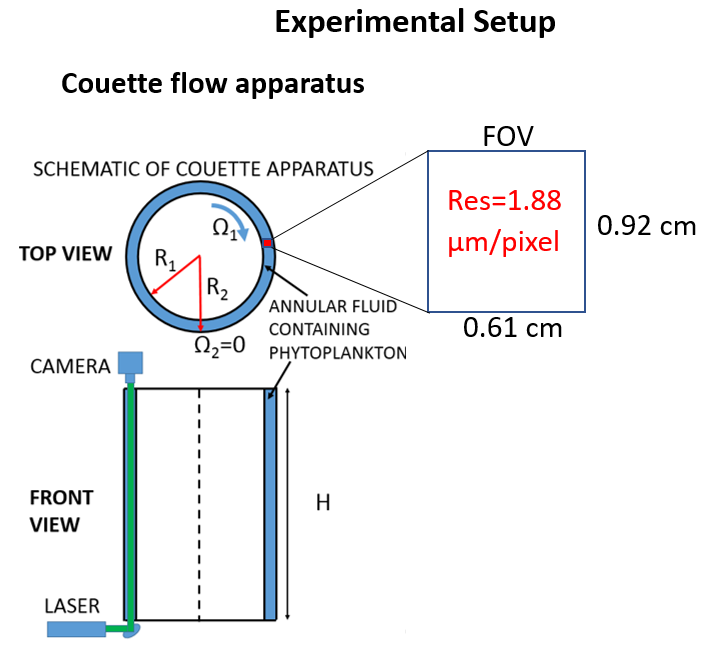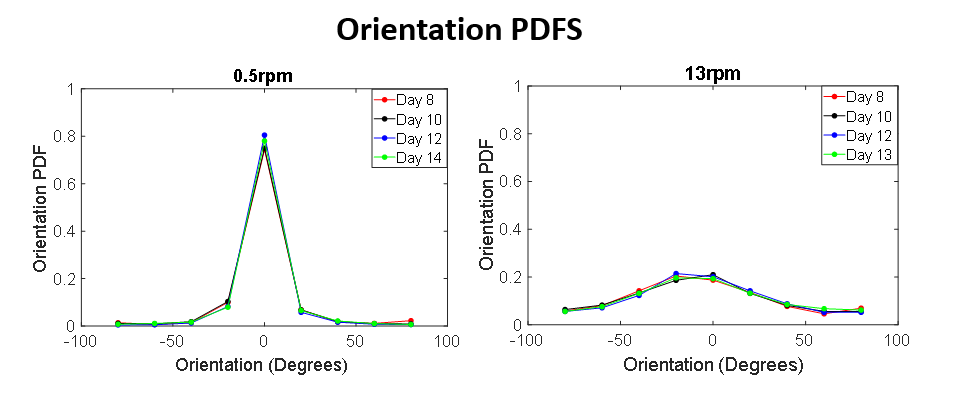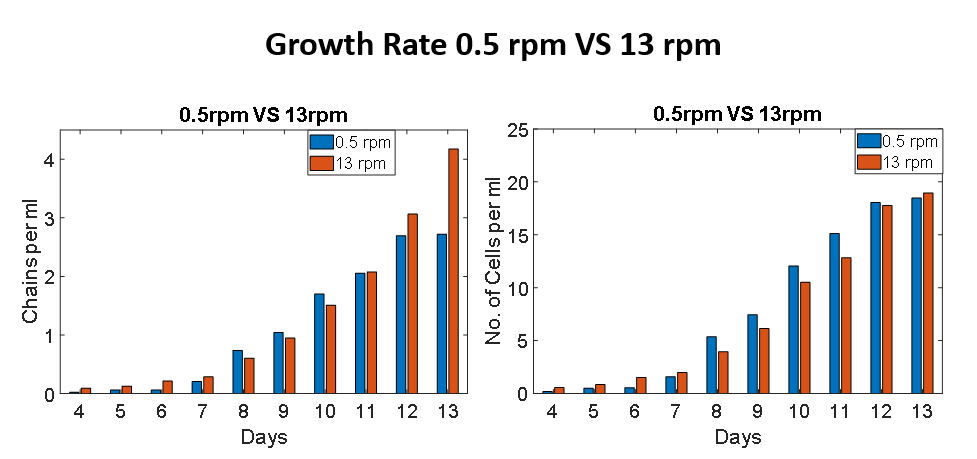Orientation of oceanic particles in the water column can play a significant role in marine ecology, potentially influencing primary productivity in marine ecosystems. Previous field experiments by our group and others have shown preferential particle alignment in oceanic shear flows is not uncommon, especially under favorable flow conditions. To complement the field experiments, we are performing laboratory studies in a temperature and light controlled environment to characterize the growth and orientation of colonial diatoms under different flow conditions. The growth and orientation of phytoplankton is observed in a circular Couette flow apparatus under different shear rates representative of laminar and turbulent regimes using digital holography. The Couette apparatus consists of an internal (rotating) and external (fixed) cylinder, 40 cm in height, capable of generating a range of shear rates. The annular gap between the two cylinders (2.5 cm) is filled with a diatom culture of the species Stephanopyxis turris. The gap Reynolds number defined as:
 is used to characterize the laminar/turbulence regimes, where Ω is rotation, R2 is radius of outer cylinder, R1 is radius of inner cylinder, and ν is the kinematic viscosity. The laminar and turbulent cases corresponded to 0.5 rpm (Reg = 164) and 13 rpm (Reg = 4252) respectively. Holograms are recorded and analyzed to characterize counts, size, growth rate and orientation of colonies. The growth rate increases exponentially in two weeks period for laminar and turbulent conditions. In the laminar case, strong preferential orientation is observed, with 70-80% of chain forming diatoms oriented in the flow direction (horizontal), in agreement with previous field studies showing similar trends. In the turbulent case, orientation is more random, with only 15-20% of the diatoms aligned in the flow direction.
is used to characterize the laminar/turbulence regimes, where Ω is rotation, R2 is radius of outer cylinder, R1 is radius of inner cylinder, and ν is the kinematic viscosity. The laminar and turbulent cases corresponded to 0.5 rpm (Reg = 164) and 13 rpm (Reg = 4252) respectively. Holograms are recorded and analyzed to characterize counts, size, growth rate and orientation of colonies. The growth rate increases exponentially in two weeks period for laminar and turbulent conditions. In the laminar case, strong preferential orientation is observed, with 70-80% of chain forming diatoms oriented in the flow direction (horizontal), in agreement with previous field studies showing similar trends. In the turbulent case, orientation is more random, with only 15-20% of the diatoms aligned in the flow direction.


- Orientation angles are divided into nine 20-degree bins. The PDF value represents the ratio of the number of particles in a given orientation bin to the total number of particles.
 The difference in growth rates between 0.5 rpm and 13 rpm (chains per ml) varies with days. Orientation and nutrient uptake could be the possible reasons for this variation.
The difference in growth rates between 0.5 rpm and 13 rpm (chains per ml) varies with days. Orientation and nutrient uptake could be the possible reasons for this variation.- Laminar flow has higher number of cells per ml after Day 7 than turbulent flow which indicates chains seem to grow longer in laminar flow than the turbulent cases.
